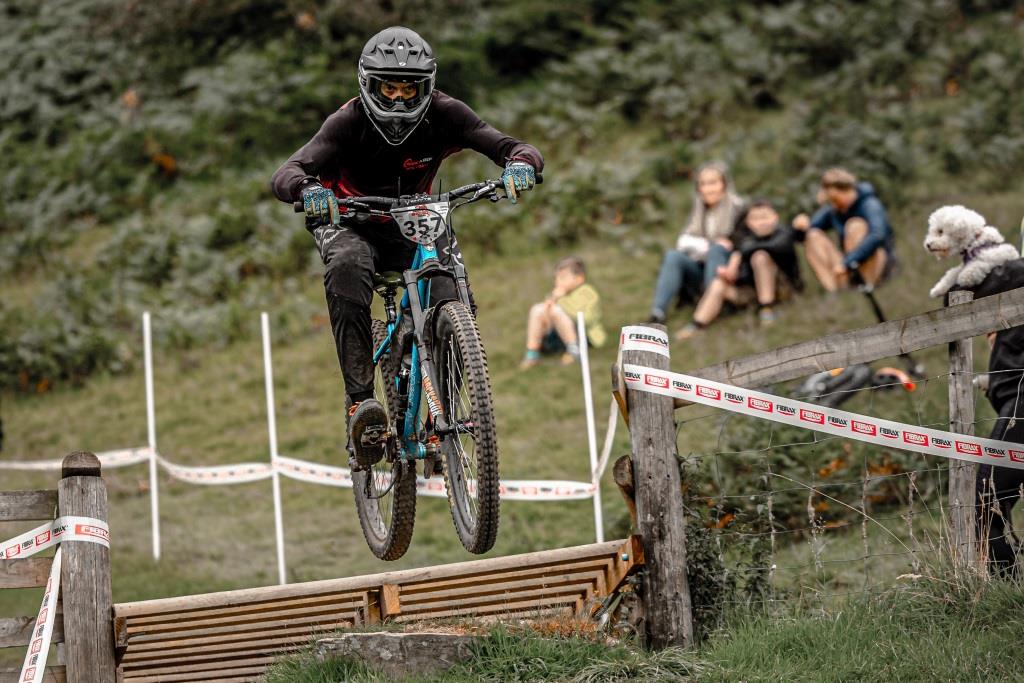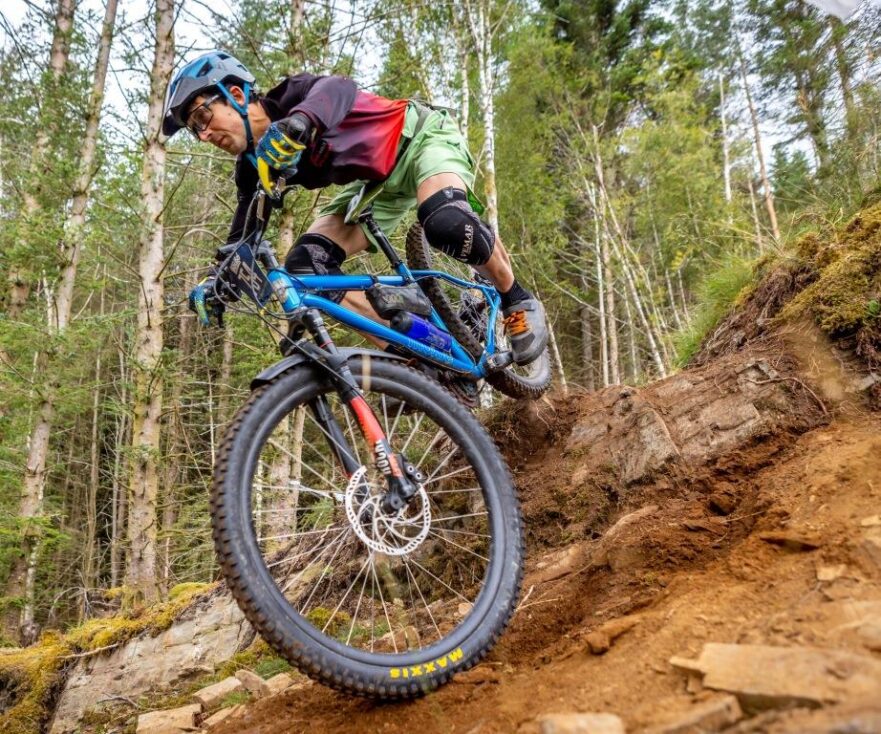Nowadays full suspension bikes dominate mountain biking, dirt jumping aside.
So, do hardtails still have a place in Enduro, Trail and XC riding? Can they be useful for improving your skills? Definitely, and this is why….
First, why not have a look at Tommy C Hype taking the Pipedream Moxie down Dyfi Bike Park’s triple black line.
Budget friendly hardtail bikes
If your bike spend budget is less than around £1500 then a hardtail can be a great option. For this much, you can get a mountain bike with a solid frame and good quality parts, suitable for riding demanding terrain.
Another option is to buy a frame for a few hundred pounds, and build something using spare parts you have laying around or pick up off eBay.
Style it up
There are quite a few manufacturers producing relatively low cost frames, which is a great way to build a bike with a custom look. There are loads of options to style your hardtail with a custom build.
Lightweight or burly setup? Nippy singletrack trail machine or long travel DH/Enduro monster? Like to pimp it with coloured parts? Some manufacturers even offer primed-only frames ready for a custom paint job, so you can go with a complete full colour scheme.
It’s a wild ride!
Whether you are tackling some rocky tech or flying down some flowy singletrack you can always make it an exciting ride on a hardtail. If the tracks are flowy and jumpy then it will give you the same poppiness a dirt jump bike does.
If the tracks are rough and techy then you will have to work harder to stay in control and hit top speed. It’s also a great way of pushing yourself when riding with your mates, particularly if you’re a similar ability to them.
Enduro training machine
If you want to progress your skills and fitness, a hardtail can make a great training bike. Particularly if you are able to transfer improvements made on a hardtail to riding a full sus.
For the high mileage riders out there: the lower maintenance over the winter can also save you hours of faff. Which means, more time on the bike!

What can riding a hardtail do for your technique and fitness?
There are technical nuances to riding a hardtail, but it can also highlight weaknesses in your riding style. For example, if you tend to be too rigid, or far back on the bike, then this will be really obvious. Whereas a full sus tends to be much more forgiving to these sorts of problems.
You are nearly always going to race faster on a full sus than a hardtail. On a hardtail, you have to work harder for speed and develop a wider range of techniques to get as fast and smooth as possible.
However, the extent to which the bike is holding you back might be much less than you think, particularly if you’re outside of the top 20% in race results, in terms of speed. (Have a look at the fastest hardtail times in these Enduro races: Llangollen Enduro Hardtails Hope PMBA Hardtail).
A few hours of steady paced riding on flat non-technical tracks, can be a beneficial alternative to your normal MTB rides. Sometimes you might lose interest or confidence in technical riding, or you might be recovering from an injury. A 2-3hr ride at a steady pace is a good way of building endurance. And a hardtail can feel a bit lighter and more responsive, than a full sus.
Feedback and flow
The main thing holding hardtails back is rough ground. All that clattering you get on hardtail is wasting energy and slowing you down. Most of this energy is absorbed by your body, which will make you feel fatigued. (This is one of the fitness benefits of riding a hardtail).
In terms of technique though, the less you brake and the more fluid you are, then the less energy you will lose over rough ground. And you will notice this in the physical effort required to hit a certain speed.
You can use these feelings of roughness and fatigue as feedback to help you improve your technique. You can learn to take smoother lines, control your speed progressively and be more active with your body movement. And as a result you should see improvements in the amount of effort required to hit the speed you are aiming for.
Jumping
Just send it! That’s something you hear a lot in the mountain biking scene.
A full sus is great fun on big, fast bikepark type jump lines, where it can smooth out most small errors. But a hardtail can be great for perfecting technique on smaller, slower jumps. Rather than just relying on speed to clear jumps, you can use more ‘pop’ (or pump) at lower speeds, giving you more height and time to style it up.
Simpler suspension setup
With just the forks to work with, and relatively simple frame geometry, learning to set up a hardtail is much simpler. You can get a feel for how the spring rate and damping settings affect the bike in different riding conditions, and then apply the same principles when setting up a full sus.
And finally…
I’m not to say riding a hardtail is magically going to make you faster or that it’s the best choice as a first mountain bike. Many of us know the trap of N+1 (N = the number of bikes you currently own!) But if you already own a full sus, then a hardtail MTB can make a good choice as a second bike, and you’ll certainly get a bit of kudos for taking it down those spicy black runs.

